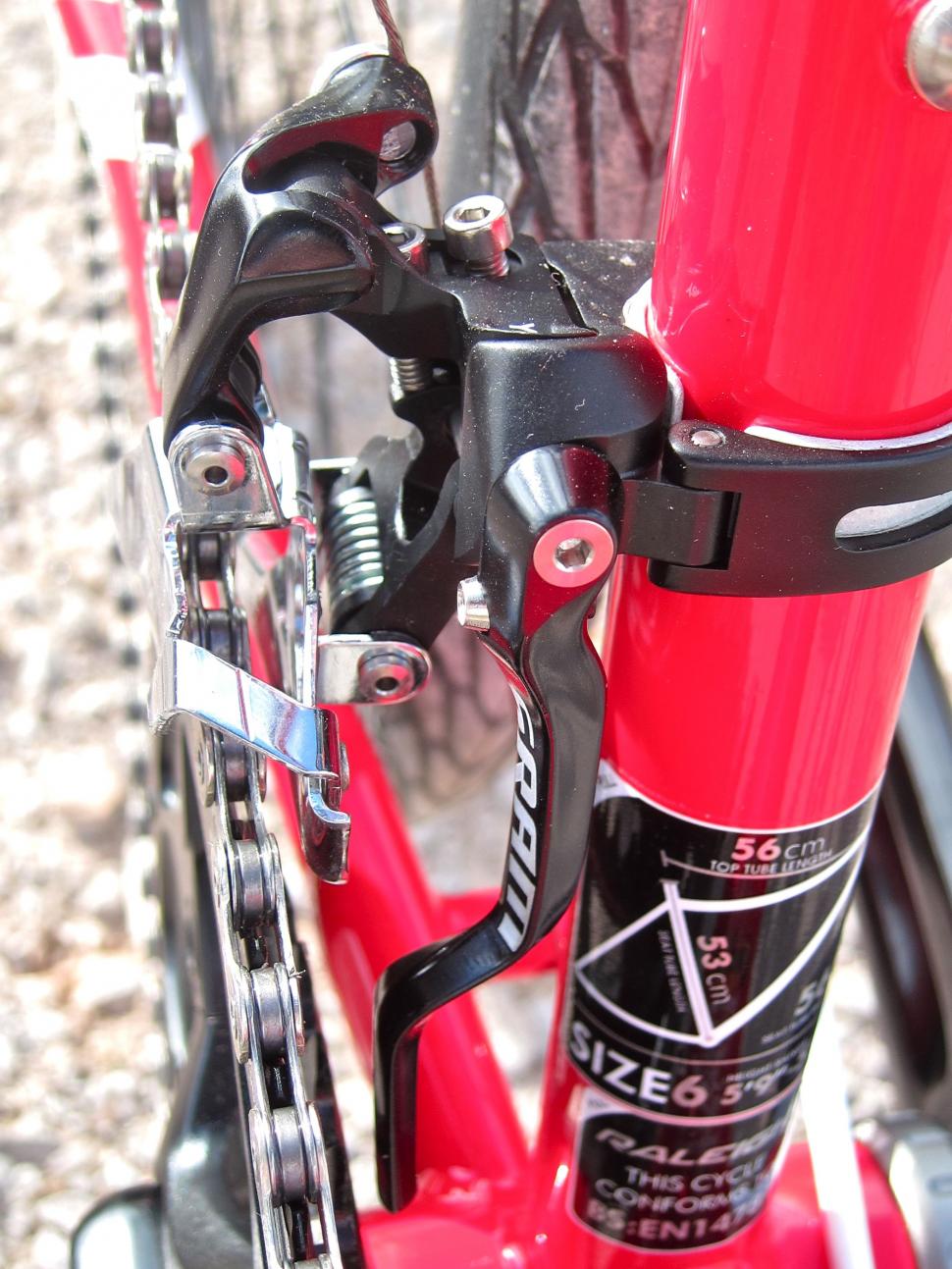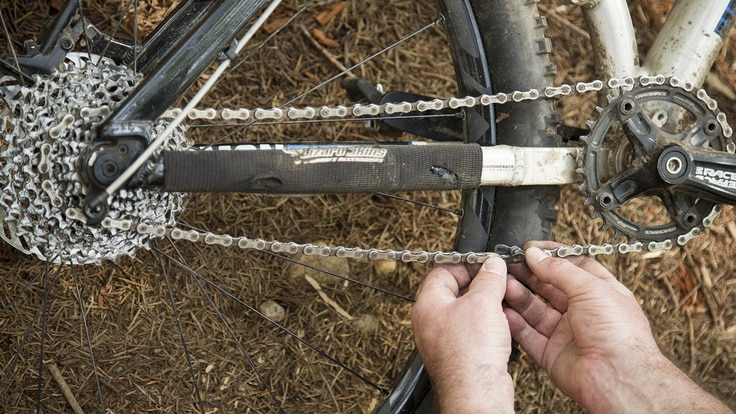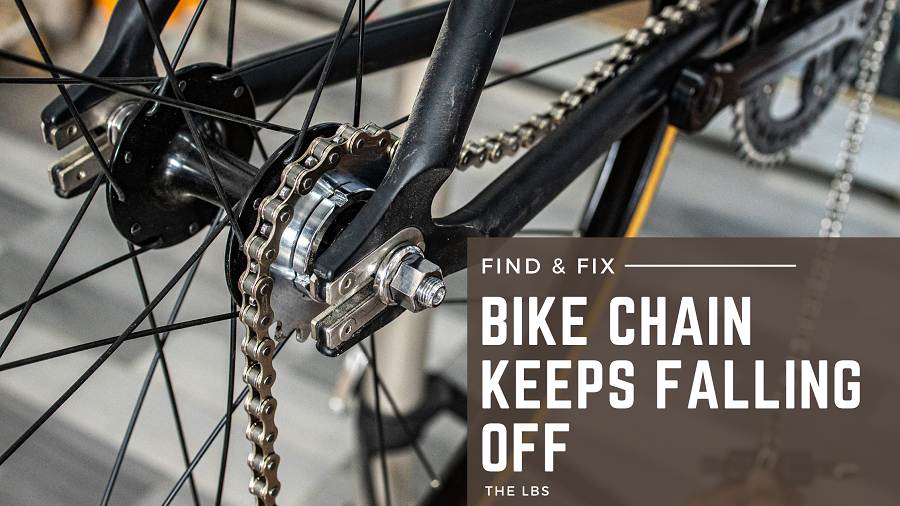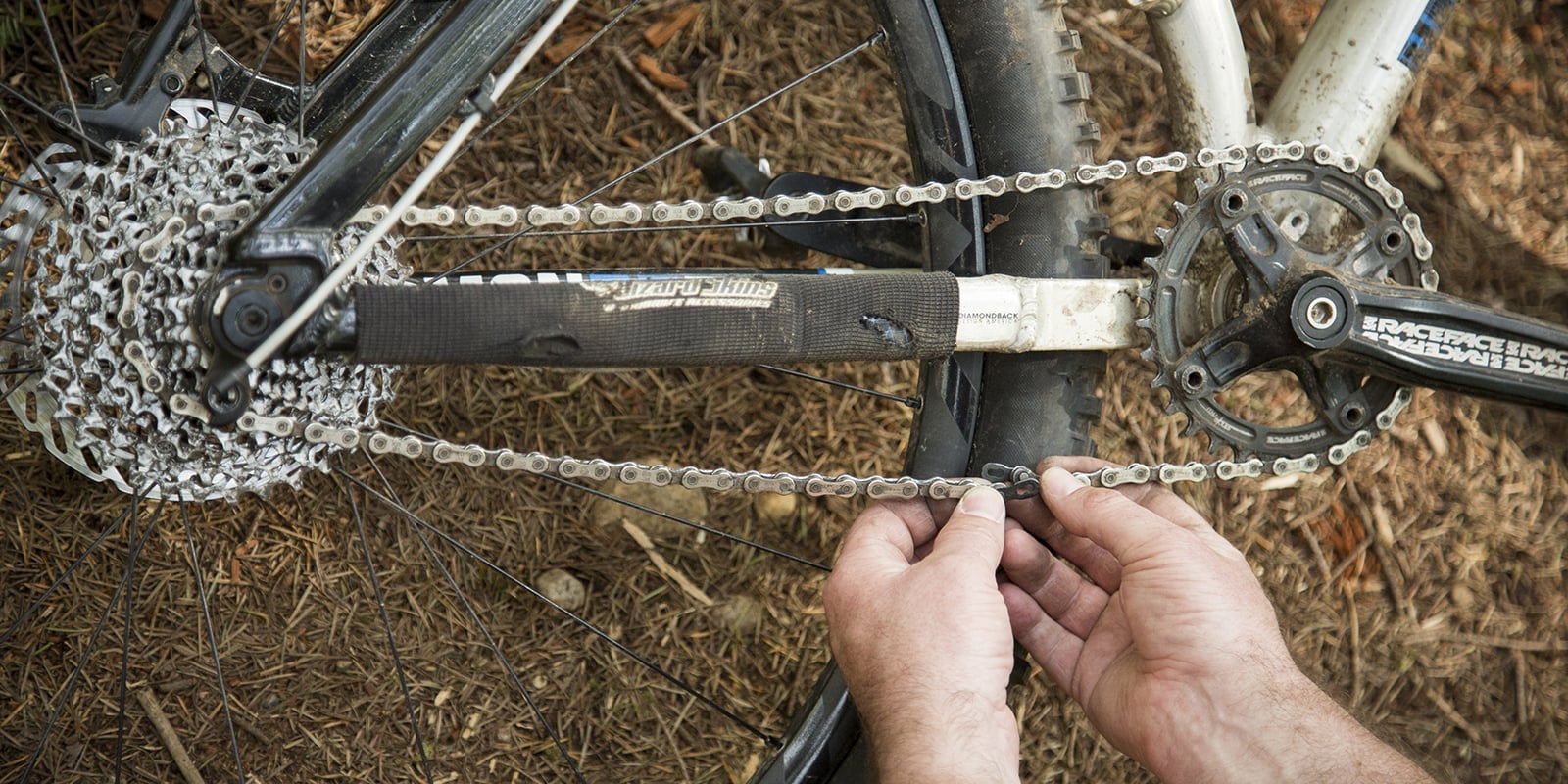Dealing with a bike chain that keeps coming off can be frustrating, especially during a ride. However, there are ways to fix this issue and ensure a smoother biking experience. In this article, we will discuss common issues that can cause a bike chain to come off, the importance of a properly functioning chain, and practical solutions to fix the problem.
Common issues with a bike chain
There are a few common issues that can cause a bike chain to come off:
- Misalignment: A misaligned chain can result from a bent derailleur hanger or a misadjusted derailleur. This misalignment causes the chain to slip off the gears.
- Worn chain or sprockets: Over time, the chain and sprockets can wear out, leading to a loose fit. When the chain becomes loose, it becomes more prone to slipping off.
- Tension issues: If the chain is too tight or too loose, it can easily come off. Proper tension ensures that the chain stays securely on the gears.
Importance of a properly functioning chain
Having a properly functioning bike chain is crucial for a smooth and safe biking experience. Here’s why:
- Efficiency: A properly functioning chain ensures smooth and efficient power transfer from your legs to the bike’s wheels. This efficiency translates into better speed and control.
- Reduced wear and tear: When the chain stays on the gears correctly, it reduces stress and wear on the chain, sprockets, and other drivetrain components. This prolongs the lifespan of your bike and saves you money on repairs and replacements.
- Safety: A chain that keeps coming off poses a safety risk. It can cause unexpected slips or jams, leading to accidents. Ensuring a secure chain helps maintain control and stability during rides.
Practical solutions to fix a bike chain that keeps coming off
To fix a bike chain that keeps coming off, here are some practical solutions:
- Check alignment: Inspect the derailleur hanger and derailleur alignment. If either is bent or misaligned, it may be causing the chain to come off. Adjusting or replacing these components can help solve the issue.
- Replace worn components: If the chain or sprockets are worn, it’s crucial to replace them. A worn chain can stretch and no longer fit securely on the gears, leading to frequent chain slips.
- Adjust chain tension: Ensure that the chain tension is correct. It should have a slight amount of slack but shouldn’t be too loose or tight. Adjusting the rear derailleur can help achieve the right tension.
- Regular maintenance: Keep your bike well-maintained by regularly cleaning and lubricating the chain. This helps prevent dirt and grime buildup, which can contribute to chain slippage.
By addressing these common issues and following the practical solutions, you can fix a bike chain that keeps coming off and enjoy a smoother and more enjoyable biking experience. Remember to regularly check and maintain your bike’s chain to prevent future issues.

Identifying the Problem
If you’re dealing with a bike chain that keeps coming off, it’s important to identify the underlying issue before attempting to fix it. Here are a few key steps to take in order to identify the problem:
Inspecting the Chain for Damage or Wear
The first step in fixing a bike chain that keeps coming off is to inspect the chain for any signs of damage or wear. Over time, the chain can stretch or become worn, causing it to slip off the gears more easily. Look for any visible signs of wear, such as rust or elongation of the links. If the chain appears to be damaged or worn, it’s important to replace it with a new one.
Checking Alignment and Tension
Another common cause of a bike chain coming off is misalignment or improper tension. To check the alignment, inspect the derailleur hanger and the derailleur itself. Look for any signs of damage or misalignment. If either of these components is bent or not properly adjusted, it can cause the chain to slip off. In this case, adjusting or replacing these components may be necessary.
Next, check the tension of the chain. A chain that is too tight or too loose can easily come off. The correct chain tension should have a slight amount of slack but should not be too loose. To adjust the tension, use the rear derailleur to make small adjustments until the chain has the proper tension.
If the chain continues to come off even after inspecting for damage and adjusting the alignment and tension, it may be necessary to seek professional help. A bike mechanic will have the expertise to identify and fix any underlying issues that may be causing the chain to come off.
Remember, regular maintenance is key to preventing a bike chain from coming off in the first place. Keep your bike clean and properly lubricated, and regularly check and adjust the chain tension to ensure a smooth and safe biking experience.
By following these steps and properly identifying the problem, you can effectively fix a bike chain that keeps coming off and get back to enjoying a smoother ride.

Adjusting the Chain Tension
Is your bike chain constantly coming off? Frustrating, right? But fear not, because fixing this issue is possible and relatively straightforward. In this section, we will explore two key methods for adjusting the chain tension, which can help keep your chain securely in place.
Loosening the Rear Wheel and Resetting the Chain Tension
One common cause of a chain coming off is improper tension. If the chain is too loose, it is prone to derailing. To rectify this, start by loosening the rear wheel. Depending on the type of bike you have, you might need a set of wrenches to release the wheel’s axle nuts or quick-release levers. Once the wheel is loose, move it backward to create some slack in the chain.
With a bit of slack, you can now adjust the tension by moving the wheel back forward. As you do this, ensure that the wheel is straight and properly aligned with the frame. Tighten the axle nuts or secure the quick-release levers once the desired tension is achieved. It’s essential to check the chain’s tension by pressing it gently with your finger while lifting the rear wheel off the ground. The tension should be sufficient to prevent excessive sagging or tightness.
Using a Chain Tensioner for Fine Adjustments
If you find it challenging to achieve precise tension with the rear wheel method, consider using a chain tensioner. These handy devices are available at bike shops and can simplify the adjustment process. A chain tensioner typically attaches to the rear derailleur hanger or the dropout, and it features a pulley that helps take up any excess slack in the chain.
To utilize a chain tensioner, start by loosening the rear wheel and creating some slack in the chain, similar to the previous method. Then, attach the tensioner to the appropriate location on the frame. Engage the tensioner’s pulley with the lower section of the chain and adjust it to achieve the desired tension. Once satisfied, tighten the tensioner in place and ensure the rear wheel is properly aligned before securing it.
It’s important to note that while chain tensioners can be helpful, they are not suitable for all bike types or setups. If you are unsure or have a unique bike configuration, it’s best to consult a professional bike mechanic for guidance.
By ensuring proper chain tension through these methods, you can minimize the occurrence of a chain coming off, leading to a smoother and safer riding experience. Remember, regular maintenance, such as cleaning and lubrication, is also important for preventing chain issues. If the problem persists despite your best efforts, seeking professional help is recommended, as there may be underlying issues that require expert attention.
Continue to enjoy your biking adventures with confidence by implementing these techniques to fix a bike chain that keeps coming off.

Fixing a Loose Chain
Having a bike chain that keeps coming off can be frustrating, but fear not, because fixing this issue is possible and relatively straightforward. In this section, we will explore two key methods for fixing a loose chain and ensuring it stays securely in place.
Reattaching the Chain to the Rear Derailleur
One common reason for a chain coming off is improper attachment to the rear derailleur. To fix this, follow these steps:
- Inspect the Rear Derailleur: Check if the derailleur is bent or misaligned. If so, gently straighten it or adjust it back into position.
- Create Slack in the Chain: Using a chain tool or your hands, push the derailleur forward, allowing slack in the chain.
- Reattach the Chain: Guide the chain back onto the rear derailleur pulleys and make sure it sits properly in all the sprockets.
- Tighten the Chain: Pull the derailleur back to remove the slack, tensioning the chain. Ensure that the chain is neither too tight nor too loose.
Properly Aligning the Derailleur and Chain
Another cause of a loose chain is improper alignment between the derailleur and the chain. Here’s how to fix it:
- Check the Derailleur Alignment: Adjust the high and low limit screws on the derailleur to make sure it is properly positioned in line with the chain.
- Align the Derailleur Pulleys: Use a screwdriver or Allen wrench to adjust the tension on the derailleur pulley. Ensure that the jockey wheel aligns with the chain and moves freely without any resistance.
- Adjust the Chain Tension: With the bike in the highest gear, adjust the barrel adjuster on the rear derailleur to remove any excess slack from the chain. The chain should be tight enough not to sag, but loose enough to move smoothly.
- Check Shifting Performance: Test the bike’s shifting performance by running through all gears. If the chain stays securely in place and shifts smoothly, you have successfully fixed the loose chain.
Remember, while these steps can help fix a loose chain, regular maintenance such as cleaning and lubricating the chain is essential to prevent future issues. If the problem persists or if you are unsure about any adjustments, it is always best to consult a professional bike mechanic for guidance. Keep enjoying your biking adventures with confidence by implementing these techniques to fix a bike chain that keeps coming off.

Preventing chain slippage
Ensuring proper gear shifting technique
One of the main reasons why a bike chain keeps coming off is improper gear shifting technique. It is important to shift gears smoothly and at the right time to prevent excessive strain on the chain. Here are some tips to ensure proper gear shifting:
- Anticipate Gear Changes: As you approach a hill or anticipate a change in terrain, shift to a lower gear before the incline or obstacle. This reduces the strain on the chain and prevents it from slipping.
- Don’t Cross Chain: Avoid riding in extreme gear combinations, such as using the largest chainring with the largest rear cog or the smallest chainring with the smallest rear cog. This puts excessive lateral stress on the chain and increases the chances of chain slippage.
- Shift Smoothly: Apply even pressure on the pedals while shifting gears and avoid sudden, jerky movements. This helps the chain transition smoothly between gears and reduces the risk of it coming off.
Regular cleaning and maintenance of the chain
Proper cleaning and maintenance of the bike chain are essential to prevent chain slippage. Here are some key maintenance practices to keep in mind:
- Clean the Chain: Regularly clean the chain using a suitable bicycle degreaser and a chain cleaning tool. This removes dirt, debris, and old lubricant that can cause the chain to slip.
- Inspect and Replace Worn Parts: Regularly inspect the chain for signs of wear, including stretched links or damaged teeth on the cassette or chainrings. Replace any worn-out parts promptly to prevent chain slippage.
- Proper Chain Lubrication: Apply a suitable bicycle chain lubricant to ensure smooth operation. Avoid using excessive lubricant as it can attract more dirt and debris, causing the chain to slip. Wipe off any excess lubricant after application.
- Tension the Chain: Ensure that the chain is properly tensioned. A loose chain is more likely to come off. Refer to the bike’s manual or consult a professional bike mechanic for guidance on adjusting the chain tension.
By following these preventative measures and maintaining your bike chain regularly, you can significantly reduce the chances of chain slippage and enjoy a smoother and more reliable biking experience.
Remember, if you’re unsure about any adjustments or if the problem persists, it’s always best to consult a professional bike mechanic for guidance. Taking proper care of your bike and its chain will not only prevent chain slippage but also extend the lifespan of your components and enhance your overall biking performance. So, keep these techniques in mind and enjoy your biking adventures with confidence!

Conclusion
In conclusion, the key to fixing a bike chain that keeps coming off lies in proper gear shifting technique and regular cleaning and maintenance. By following these steps, you can prevent chain slippage and enjoy a smoother biking experience.
Summary of Steps to Fix a Bike Chain That Keeps Coming Off
- Ensure Proper Gear Shifting Technique: Anticipate gear changes, avoid extreme gear combinations, and shift smoothly to prevent strain on the chain.
- Regularly Clean the Chain: Use a suitable bicycle degreaser and chain cleaning tool to remove dirt, debris, and old lubricant that can cause the chain to slip.
- Inspect and Replace Worn Parts: Regularly check for worn-out parts like stretched links or damaged teeth on the cassette or chainrings. Replace any worn parts promptly.
- Proper Chain Lubrication: Apply a suitable bicycle chain lubricant to ensure smooth operation. Avoid excessive lubrication and wipe off any excess after application.
- Tension the Chain: Ensure that the chain is properly tensioned. A loose chain is more likely to come off. Refer to the bike’s manual or consult a professional for guidance.
Additional Resources for Bike Maintenance and Repair
For further information on bike maintenance and repair, here are some resources you can explore:
- Bike Maintenance Tips: Explore online resources and videos that provide comprehensive guides on bike maintenance and repair.
- Local Bike Shops: Visit your local bike shop and inquire about workshops or classes on bike maintenance. The experts there can provide hands-on guidance and advice specific to your bike.
- Online Forums and Communities: Join online forums or communities dedicated to cycling and bike maintenance. Here, you can ask questions, get advice, and share your experiences with fellow cyclists.
Remember, always prioritize safety when working on your bike and, if unsure about any adjustments or if the problem persists, consulting a professional bike mechanic is recommended.
By following proper maintenance practices and addressing any issues promptly, you can keep your bike chain secure and enjoy worry-free biking adventures. Regular care and attention to your bike’s chain will not only prevent chain slippage but also extend the lifespan of your components, ensuring optimal performance for years to come.

